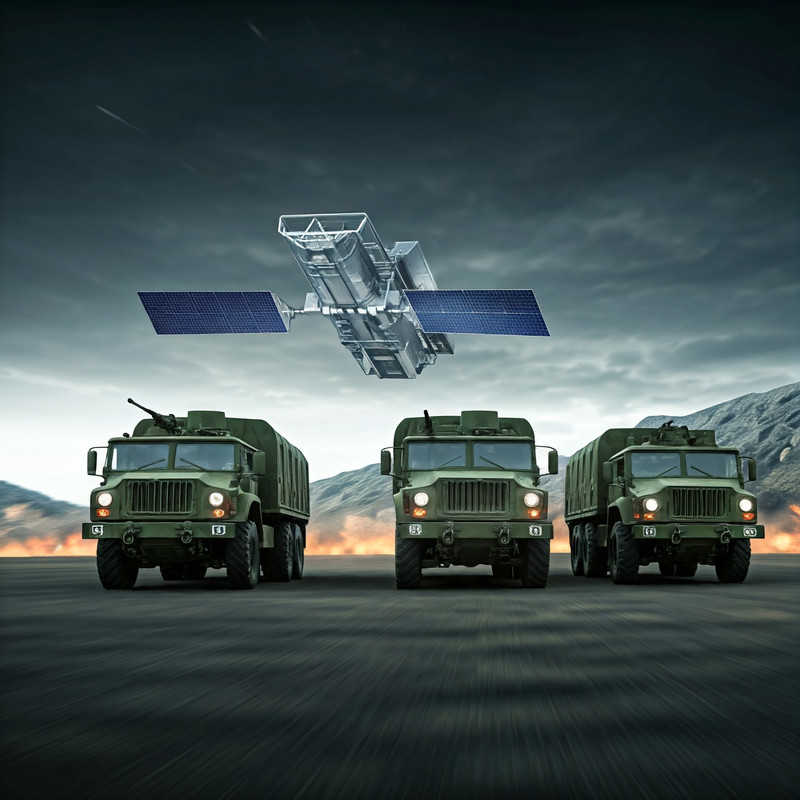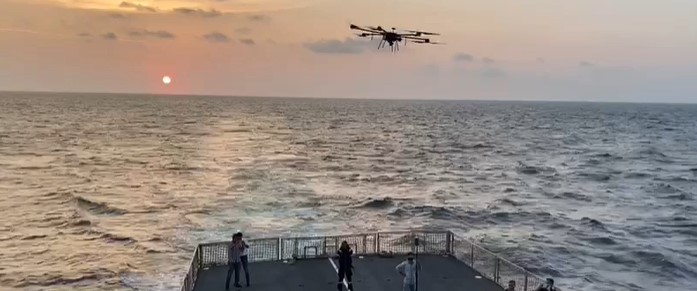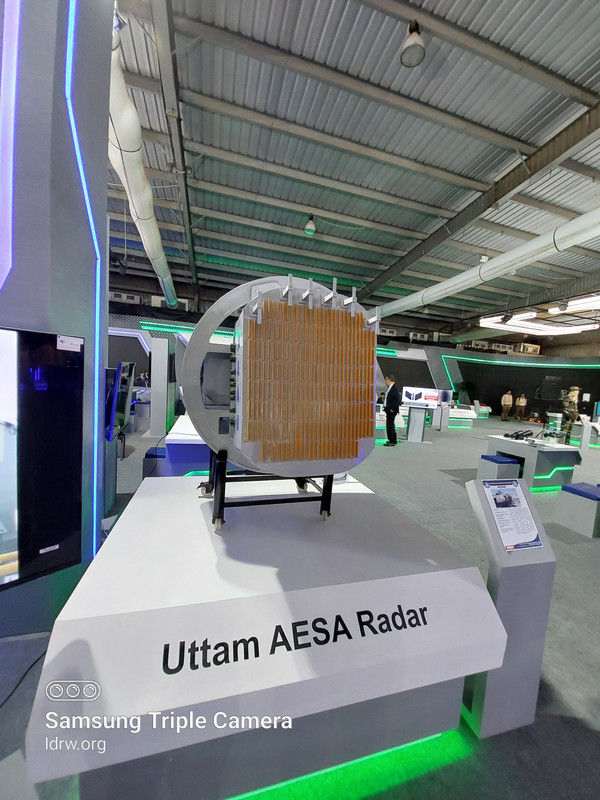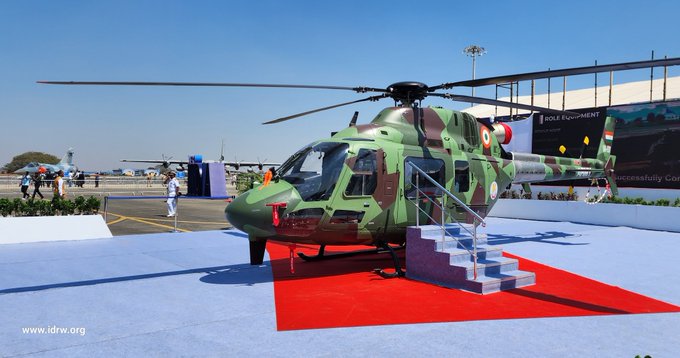SOURCE: AFI


India’s second Indigenous Aircraft Carrier (IAC-2) is set to mark a significant leap in naval propulsion technology by incorporating an Integrated Electric Propulsion System (IEPS) powered by Rolls-Royce MT-30 gas turbines. This next-generation propulsion system aligns with global advancements and represents a shift from the four US-supplied LM2500 engines currently powering the IAC-1, INS Vikrant, which delivers 88 MW for a top speed of 28 knots.
The Rolls-Royce MT-30, regarded as one of the world’s most power-dense marine gas turbines, will serve as the backbone of the IAC-2’s IEPS. The MT-30’s exceptional power output has already been proven on advanced platforms such as the Royal Navy’s HMS Queen Elizabeth and HMS Prince of Wales. These aircraft carriers utilize the MT-30 in conjunction with electric propulsion systems, enabling operational flexibility, reduced noise, and enhanced efficiency.
Continue readingSOURCE: AFI


Abdul Basit, a former Pakistani diplomat who served as the High Commissioner of Pakistan to India, has called for the Pakistan Navy to include nuclear-powered submarines in its fleet. Speaking to ABN News, Basit emphasized the strategic necessity of such acquisitions, particularly in the context of India’s growing capabilities, including its successful test of the K-4 submarine-launched ballistic missile (SLBM) from the nuclear-powered submarine INS Arihant, which completes India’s nuclear triad.
Basit underscored the importance of establishing parity with India’s naval and nuclear capabilities, suggesting that the Pakistan Navy’s current fleet lacks the deterrence power necessary to counterbalance India’s advancements. He argued that the induction of nuclear-powered submarines would not only strengthen Pakistan’s naval posture but also enhance its second-strike capability, which is a critical component of maintaining strategic stability in the region.
Continue readingSOURCE: AFI


The Central Reserve Police Force (CRPF) has begun deploying the Wheeled Armoured Amphibious Platform (WhAP) in the Naxal-affected regions of eastern India. Developed jointly by Tata Advanced Systems Limited and the Defence Research and Development Organisation (DRDO), the WhAP represents a significant enhancement in mobility, protection, and operational capability for forces operating in some of India’s most challenging environments.
he WhAP is an 8×8 armoured vehicle designed to perform in diverse terrains, including unpaved roads and dense jungles. It can carry up to 12 soldiers, including the driver, and is equipped with advanced features to ensure survivability and operational efficiency.
Continue readingSOURCE: AFI


The prestigious High Altitude Warfare School (HAWS) in Gulmarg recently hosted the Argentina Defense Attache on November 27th. The visit aimed to delve into the intricacies of mountain warfare and tactical operations in high-altitude terrain, exploring potential avenues for future collaboration between the Indian and Argentinian armies.
The Argentinian Defense Attache, a seasoned expert in high-altitude warfare, engaged in insightful discussions with HAWS instructors. The conversation centered around modern warfare in mountainous regions, including the nuances of training and tactical operations in such demanding environments.
Continue readingSOURCE: IDRW.ORG.


Former DRDO Chief, Dr. G. Satheesh Reddy, speaking at the Emerging Technologies in Defence event hosted by the Madras Management Association in Chennai, confirmed that the rollout of the Tejas MkII fighter jet is progressing as planned. According to Dr. Reddy, the rollout is scheduled to take place between September and October 2025, marking a major milestone in India’s indigenous defense aviation program.
The Tejas MkII is the next-generation iteration of the Light Combat Aircraft (LCA) program, designed to bridge the gap between the existing Tejas MkI/MkIA variants and India’s fifth-generation Advanced Medium Combat Aircraft (AMCA).
Continue readingSOURCE: IDRW.ORG.


As India strides toward enhanced digital connectivity, the introduction of satellite internet services like Starlink presents both significant opportunities and potential challenges. Developed by SpaceX, Starlink aims to deliver high-speed internet to even the most remote regions using a constellation of low Earth orbit satellites. While this technology has the potential to bridge the digital divide, it also raises serious concerns about national security, particularly in sensitive or troubled regions.
Starlink’s ability to function independently of traditional terrestrial internet infrastructure is one of its greatest strengths but also its most pressing challenge. Unlike conventional internet services, which rely on physical networks within a country, Starlink provides connectivity directly via satellites and small ground terminals. This independence can enable unregulated and encrypted communication, posing a serious threat in areas experiencing unrest or conflict. For instance, in regions with ongoing insurgencies or militant activities, access to Starlink could allow hostile actors to bypass government-imposed restrictions, coordinate operations, and evade surveillance.
Continue readingSOURCE: AFI


Pakistan has reportedly cleared the procurement of the advanced J-35 fighter jet, with deliveries expected to commence within the next 24 months. This significant development, reported by 24 News HD, underscores a major modernization effort by the Pakistan Air Force (PAF). The move is seen as a critical step in bolstering Pakistan’s air combat capabilities, with PAF pilots already undergoing training on the platform.
The J-35 is China’s latest 5th-generation stealth fighter, designed as a carrier-based aircraft but adaptable for land-based operations. It incorporates advanced stealth features, modern avionics, and a robust sensor suite, positioning it as a formidable opponent in the skies. Equipped with AESA radar, internal weapons bays, and high maneuverability, the J-35 is expected to enhance the PAF’s ability to conduct a wide range of missions, from air superiority to deep-strike operations.
Continue readingSOURCE: AFI


Indian Navy Chief Admiral R. Hari Kumar recently confirmed a successful test of a submarine-launched ballistic missile (SLBM). While details regarding the missile’s trajectory and specifics were not disclosed, it is widely speculated that the test involved the K-4 SLBM, marking a significant achievement for India’s strategic deterrence capabilities.
Reports suggest that the test was conducted from the nuclear-powered ballistic missile submarine, INS Arihant, and, for the first time, the missile was tested at its full operational range. The K-4, developed by the Defence Research and Development Organisation (DRDO), is a key component of India’s nuclear triad, offering a range of up to 3,500 kilometers.
Continue readingSOURCE: AFI


Recent reports circulating on social media platforms, particularly on X (formerly Twitter), suggesting that Hindustan Aeronautics Limited’s (HAL) CATS Warrior Unmanned Combat Aerial Vehicle (UCAV) has already conducted its maiden flight are inaccurate. HAL has clarified that the development of the 1.1-ton Warrior Loyal Wingman prototype is still in the fabrication stage, with its first flight expected only in the later months of 2025.
The Combat Air Teaming System (CATS) Warrior, an ambitious project under HAL’s umbrella, aims to develop an advanced Loyal Wingman UCAV designed to operate alongside manned fighter jets like the Tejas and AMCA. Following the successful testing of a 300-kilogram scaled-down model, the full-scale prototype received the green light for fabrication earlier this year.
Continue readingSOURCE: AFI


Indian Navy Chief Admiral Dinesh K Tripathi has confirmed that the long-awaited deal for 26 Rafale M fighter jets is nearing completion and could be finalized within the next two months. This acquisition marks a significant step forward for enhancing the Navy’s air combat capabilities, particularly for its aircraft carrier operations.
The deal is set to include 22 single-seater Rafale M F4 variants specifically tailored for carrier-based operations and four twin-seater Rafale B F4 variants for training purposes. While the Rafale M variants will operate from the Navy’s aircraft carriers, the Rafale B units will be limited to shore-based training missions at the Indian Naval Air Station INS Hansa in Goa, as they are not designed for carrier operations.
Continue readingSOURCE: AFI


In a significant achievement for India’s maritime security, the Indian Navy seized 500 kilograms of crystal meth in the Arabian Sea with the instrumental assistance of the Maritime Spotter Drone supplied by Sagar Defence Engineering. This operation underscores the growing importance of cutting-edge drone technology in safeguarding national waters and combating drug trafficking.
The Maritime Spotter Drone, developed by the Indian company Sagar Defence Engineering, played a pivotal role in the successful interception of the narcotics shipment. Its advanced surveillance and reconnaissance capabilities enabled precise monitoring and tracking, providing the Indian Navy with crucial intelligence to execute the operation.
Continue readingSOURCE: RAUNAK KUNDE / NEWS BEAT / IDRW.ORG


India’s ambitious fighter jet programs, the Tejas Mk1A and Tejas MkII, are set to share the same state-of-the-art Uttam Active Electronically Scanned Array (AESA) Fire Control Radar, underscoring a focus on commonality and advanced technology in the country’s defense aviation sector. This decision not only streamlines production and integration but also enhances the operational capabilities of both aircraft platforms.
The Uttam AESA radar, developed by India’s Defence Research and Development Organisation (DRDO), features 912 Transmit-Receive Modules (TRMs) with 896 active elements, and 16 receive-only elements using Gallium Arsenide (GaAs) technology. This radar offers exceptional performance in air-to-air, air-to-ground, and air-to-sea missions, ensuring high levels of situational awareness and targeting precision.
Continue readingSOURCE: RAUNAK KUNDE / NEWS BEAT / IDRW.ORG


Hindustan Aeronautics Limited (HAL) is reimagining its production approach for the Light Utility Helicopter (LUH), aiming to meet the burgeoning demand from the Indian Army and Indian Air Force (IAF) while fostering the growth of the domestic aerospace manufacturing ecosystem. The LUH, a 3-tonne class, highly agile, new-generation helicopter, is set to replace the legacy Cheetah and Chetak helicopters currently in service.
With a combined requirement of nearly 400 LUHs, HAL is gearing up to streamline its production process to achieve a potential peak capacity of 30 units per year at its Tumakuru facility.
Continue readingSOURCE: RAUNAK KUNDE / NEWS BEAT / IDRW.ORG


In a significant move to bolster its armored capabilities, India’s Armoured Vehicles Nigam Ltd (AVNL) has announced plans to form a joint venture (JV) with Russian firms Rosoboronexport (ROE) and High Precision Systems (HPC). This partnership is aimed at the development and manufacture of an Indian Light Tank, targeting the Indian Army’s requirement for 295 light tanks under the Make-I category of indigenous procurement.
AVNL, along with India Optel Limited (IOL), will hold a majority stake in the joint venture, ensuring that Indian stakeholders maintain significant control over the project. This collaboration will leverage Russian expertise in light tank development, particularly the Sprut-SD design, to compete against indigenous solutions such as the Zorawar Light Tank, which is being developed by the Defence Research and Development Organisation (DRDO) in partnership with private industry.
Continue readingSOURCE: AFI


Spanish shipbuilding giant Navantia has asserted that the S-80 Class submarine it has offered to India under the ambitious Project-75 (I) program is not a diluted export variant but the exact model deployed by the Spanish Navy. This claim strengthens Navantia’s position in India’s hunt for advanced conventional submarines equipped with next-generation capabilities.
The S-80 Class submarine, currently in service with the Spanish Navy, represents a new generation of non-nuclear propulsion submarines, designed for extended missions and high-performance operations. Speaking about its offer to India, Navantia emphasized that the platform will come equipped with all systems identical to those used by Spain, with no major subsystems omitted or downgraded.
Continue reading